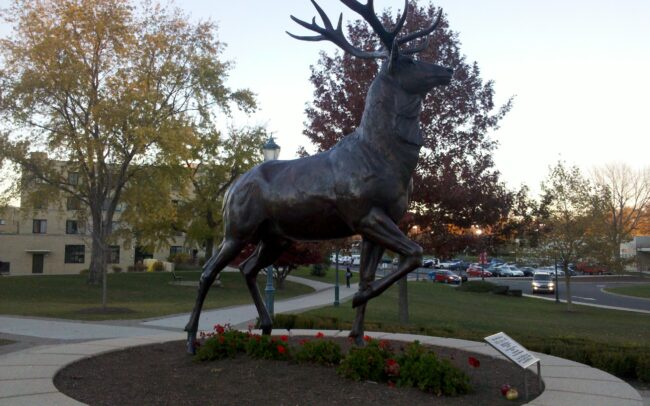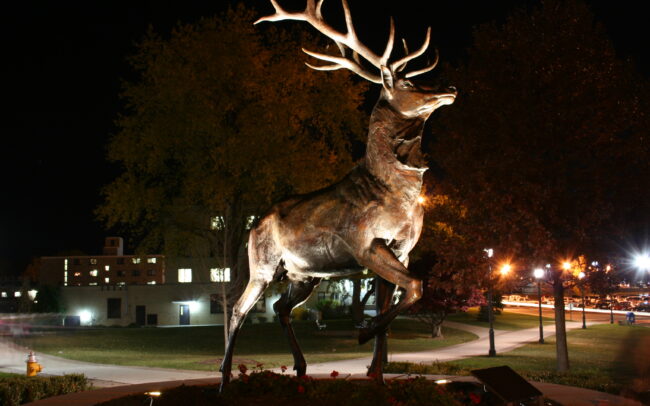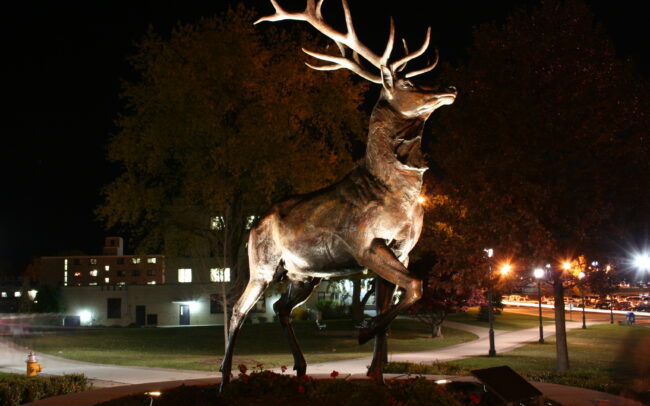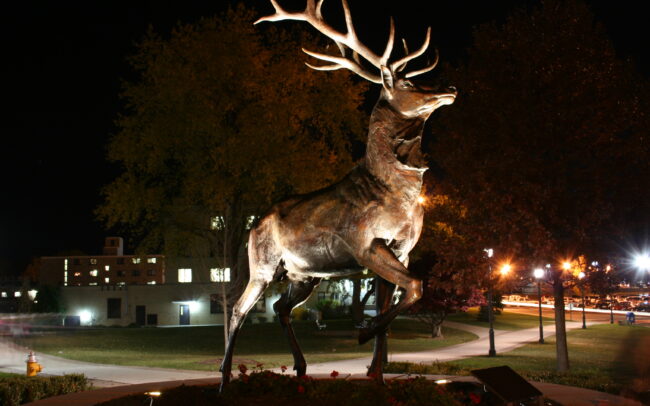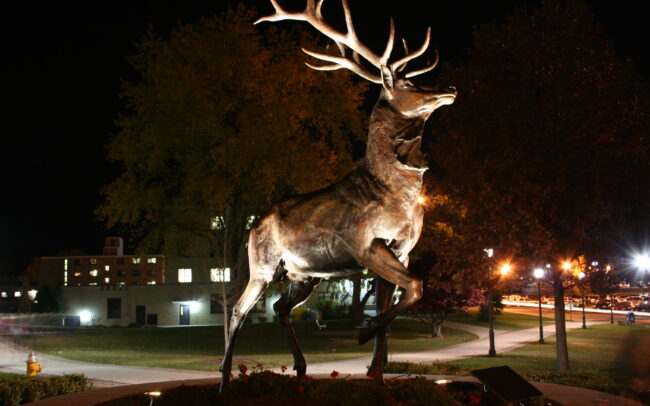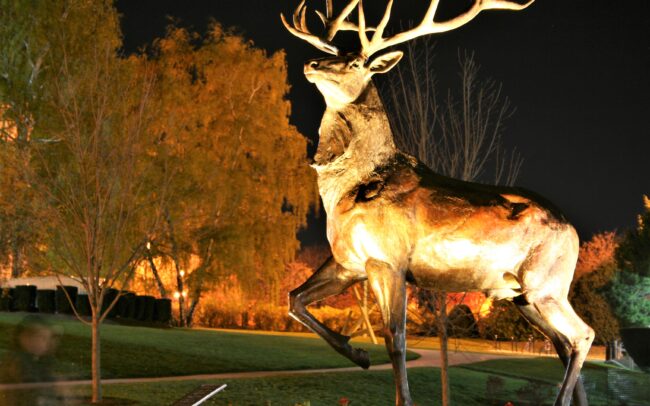Statuary
Statuary Lighting
People are really beginning to reconnect with their homes both indoors and out.
Gardening, grilling, and grinding it out at home with work is now paramount in people’s lives. The backyard design which was once nice to “look at”, has now become a priority for outdoor living and the backyard contributes to our lives 24/7. Whether it’s an early morning yoga experience or a 6 pm birthday bash, the backyard had better be ready. People are multi-tasking and making spaces in their own yards to pair with the family’s daily work and recreation modes of life. How does one connect with the landscape spaces beyond selecting plants that flourish with textures and broadcast the owner’s favorite colors when in bloom?
Another personalized approach is Statuary, a meaningful piece on display in the owner’s own garden. Whether it is a reminder of a trip, a lost loved one, or simply love for the with the art of the sculpture.
These meaningful Sculptures can be large in magnitude and made of Cortland steel, bronze, stainless steel, wood, ceramic, or fiberglass, they are all deserving of light. What is our challenge in illuminating them? The goal is to provide illumination to the statuary so that it would appear in 3D at night, the same way it is seen during the day.
The nighttime illumination is bending or blending the light, to see the focal point as it is intended. What a wintertime scene it is to see your favorite statue making your backyard come alive at night.








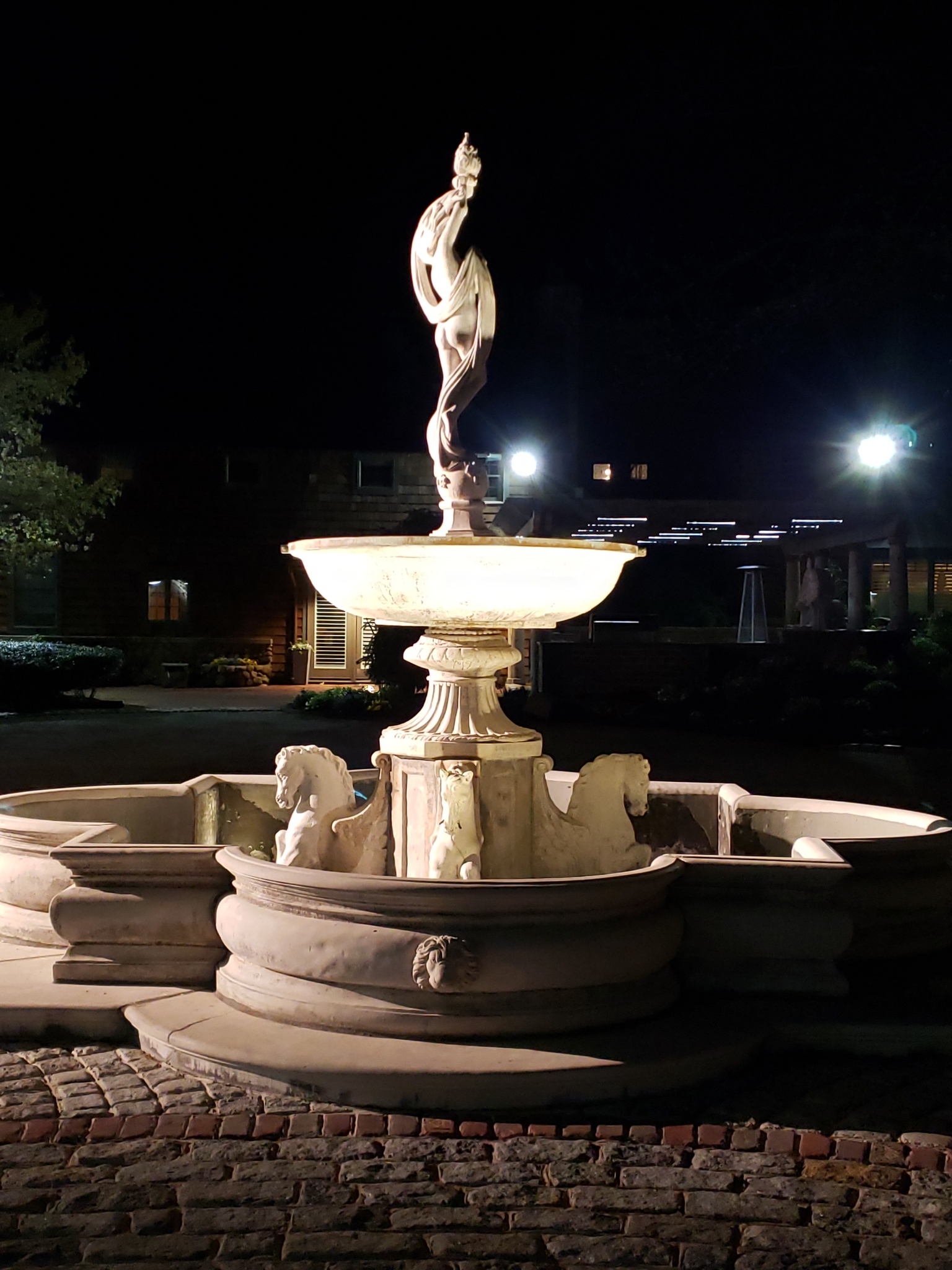
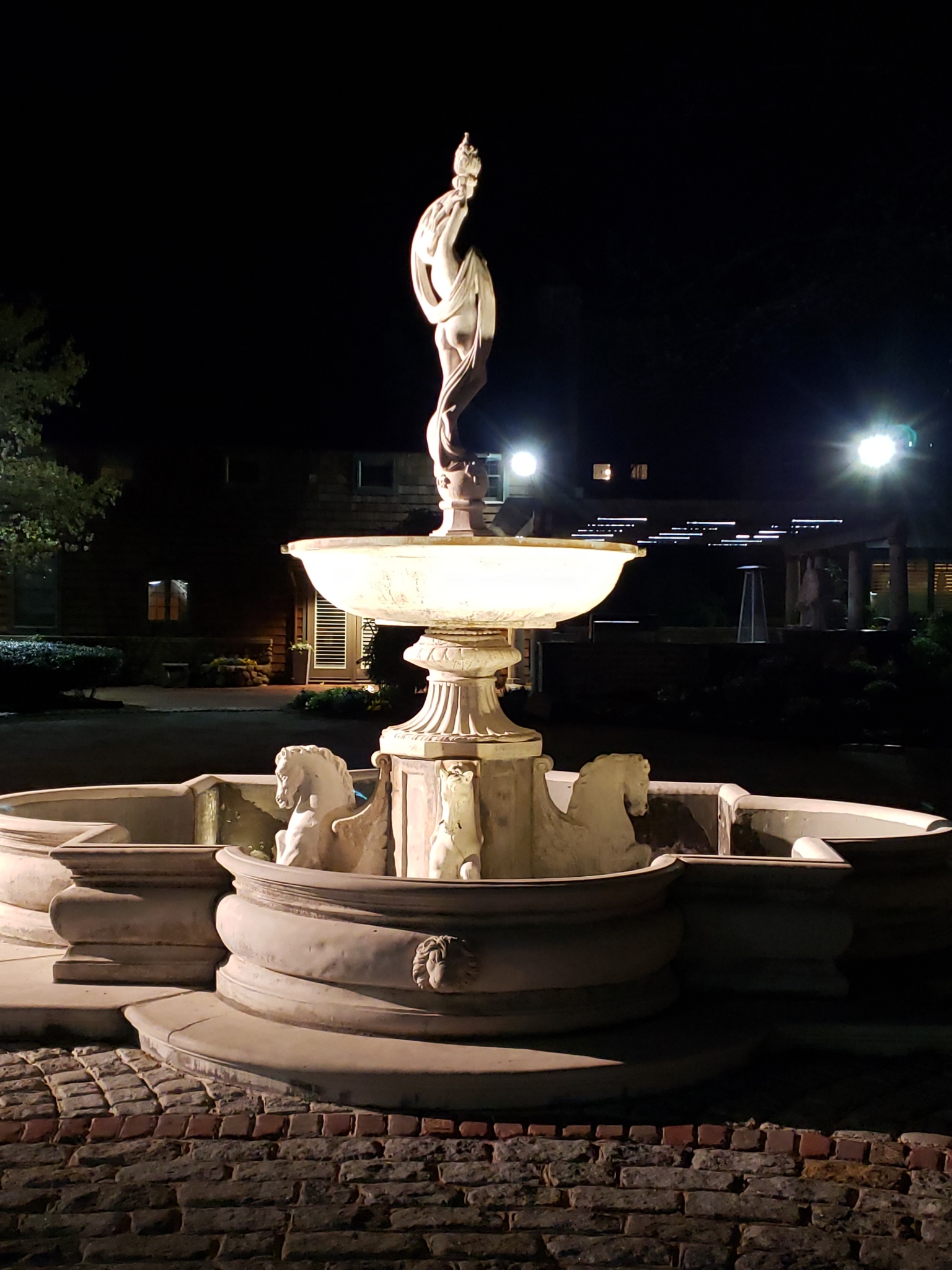
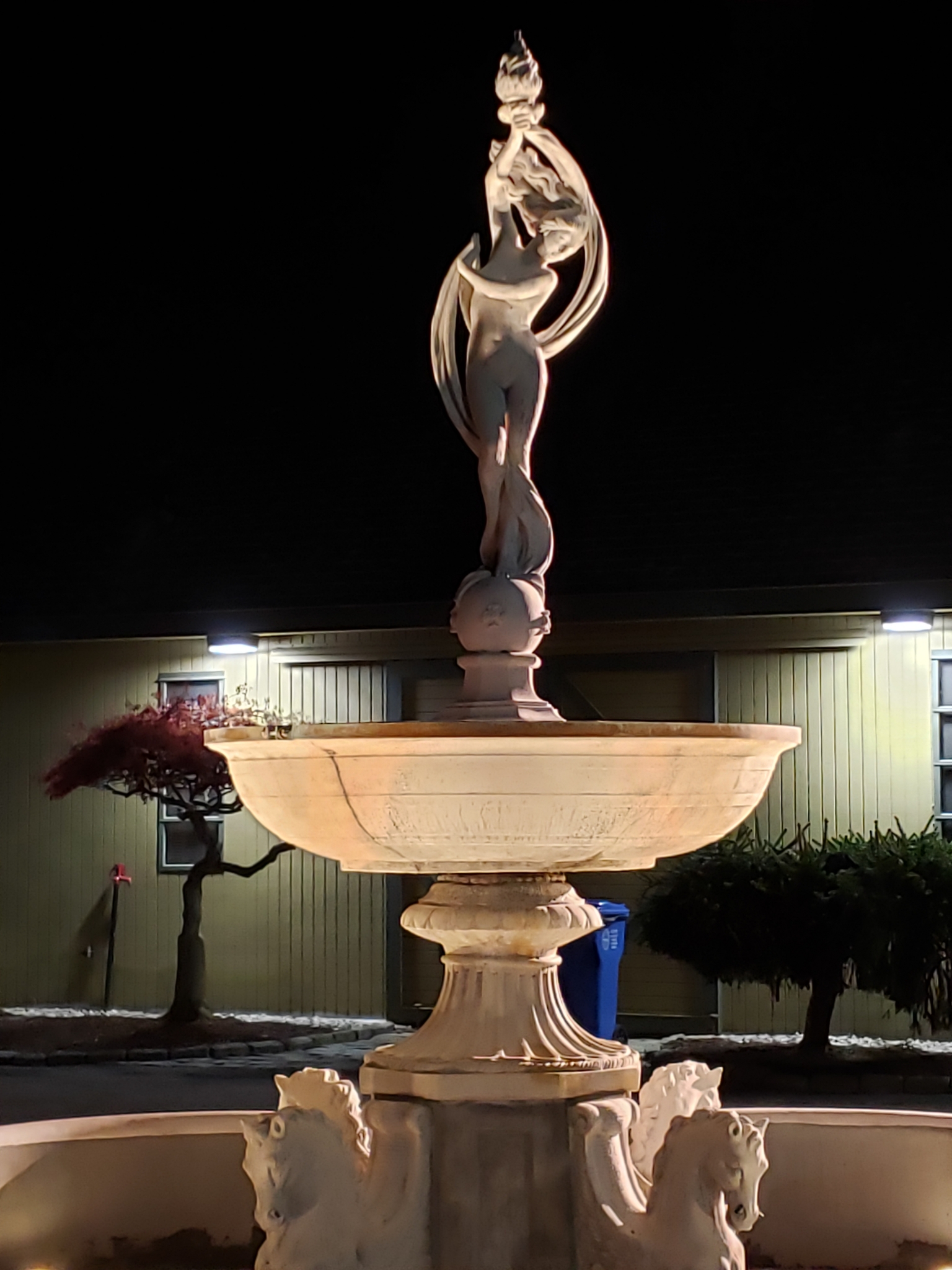
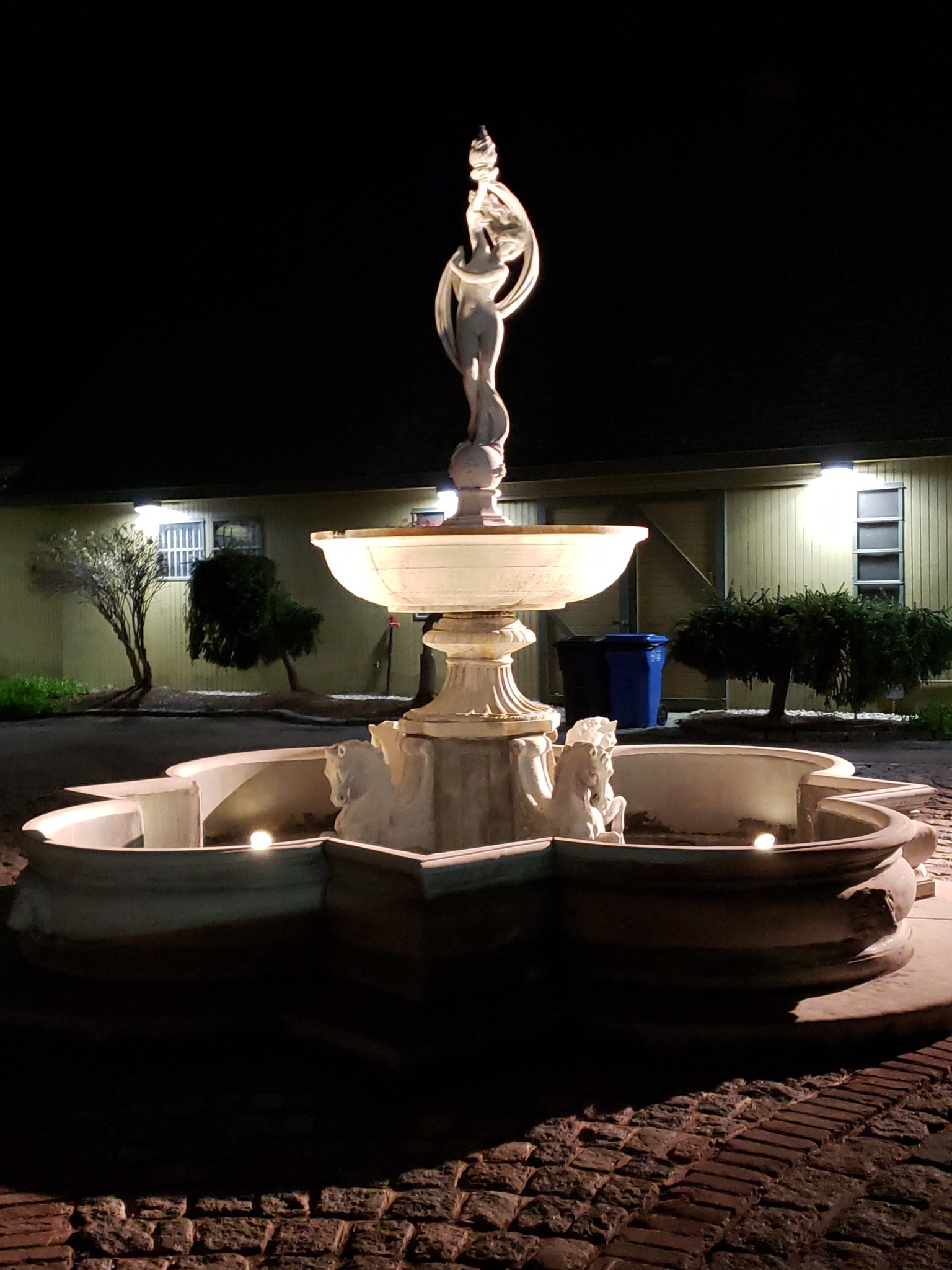
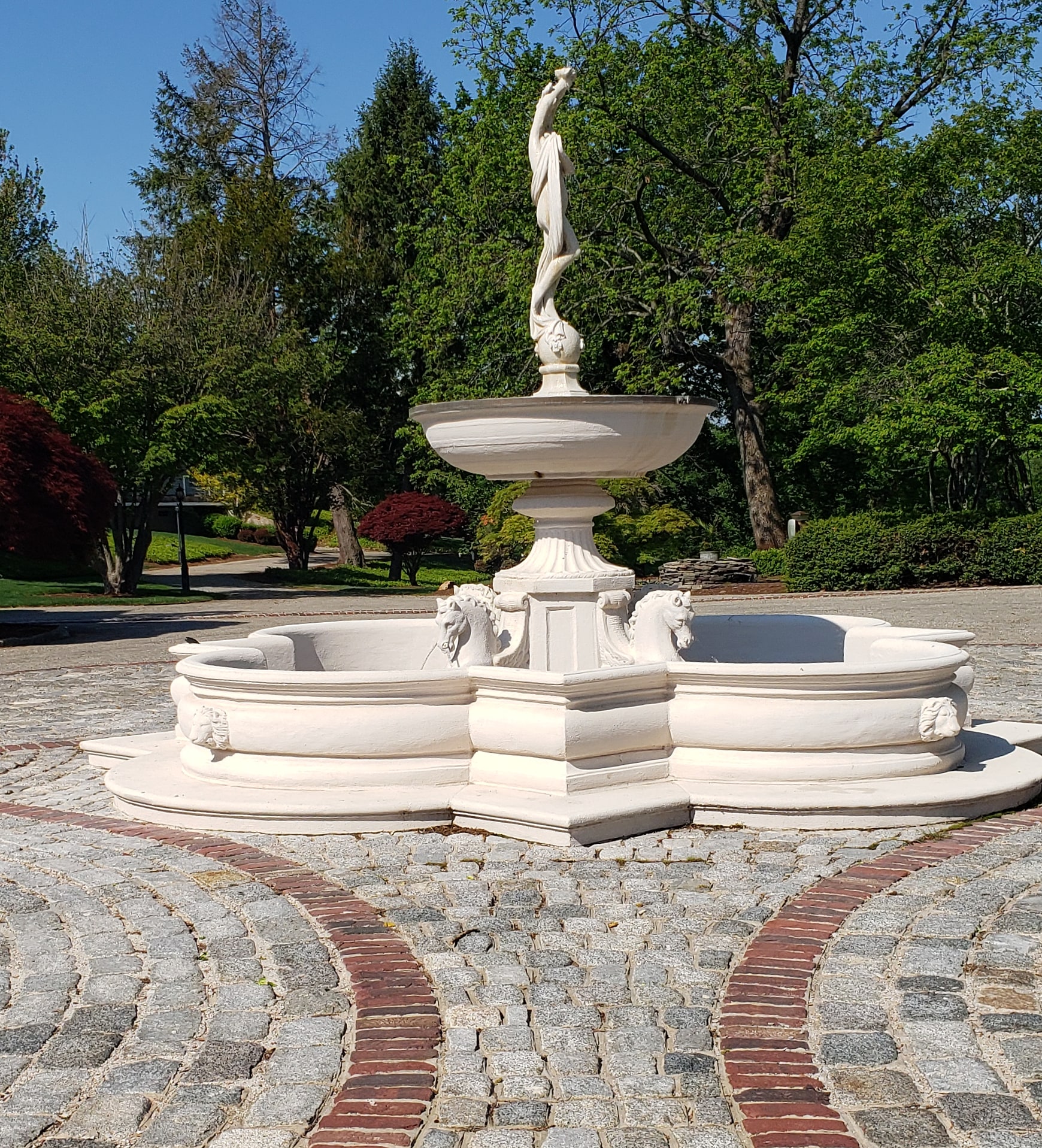
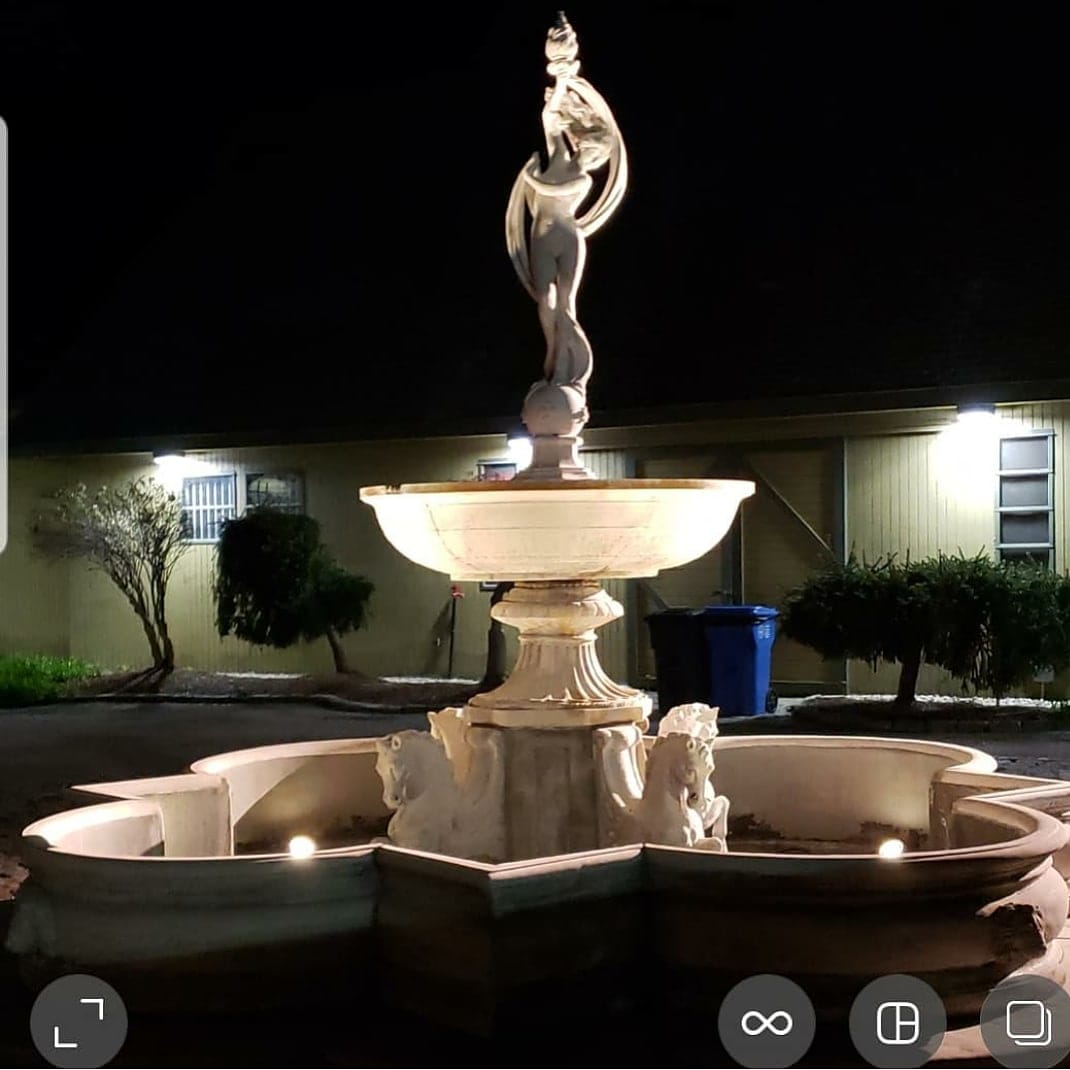
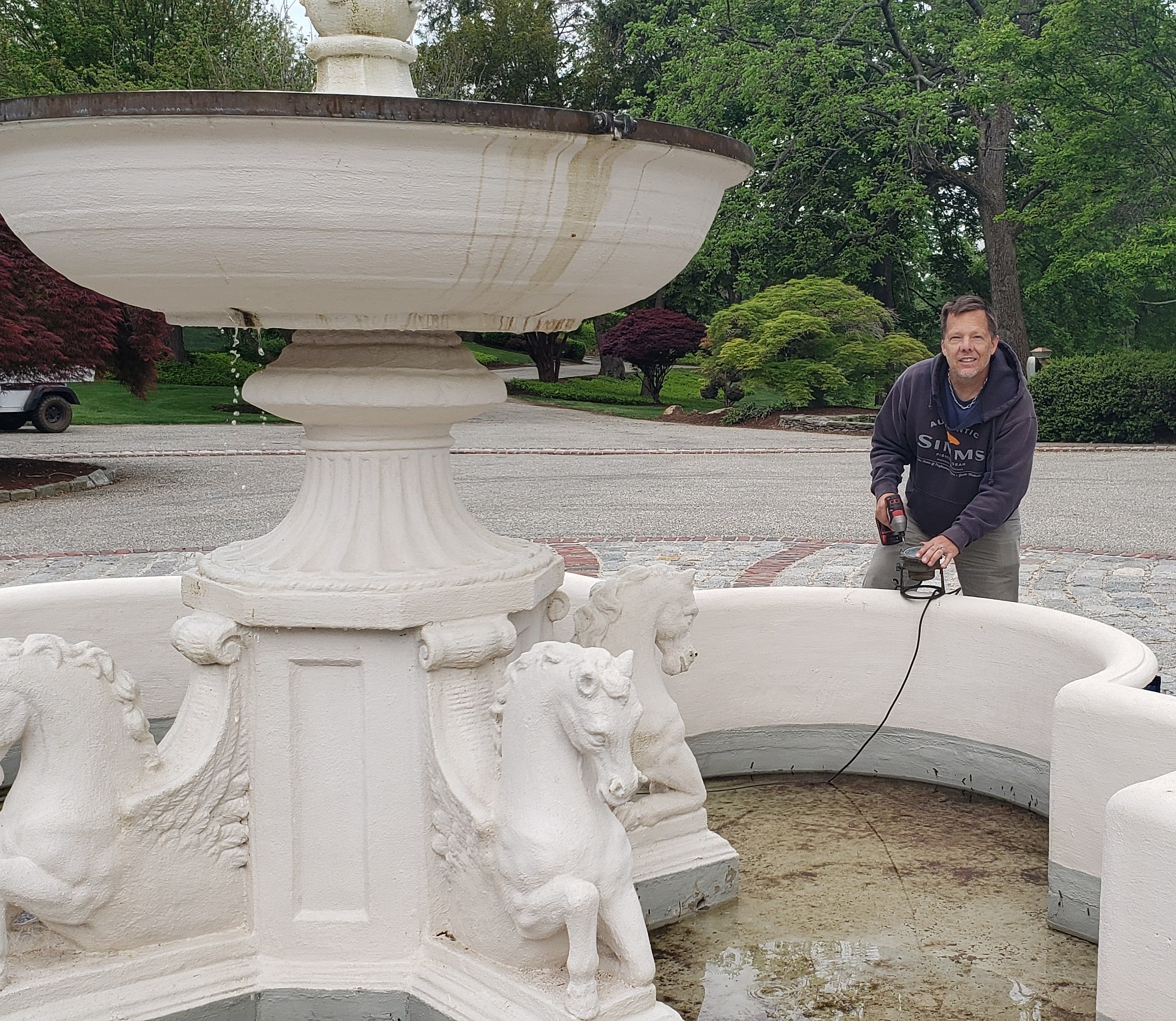

Lighting Strategies are in essence all the tools you need in your outdoor lighting toolbox to achieve the fullest in Outdoor Illumination.
Uplighting-
Uplighting is the most basic but useful technique in Outdoor Lighting.
Although it is contrasted amongst natural light elements which fall down upon the scene. Uplighting contrasts a distinguishing difference. It is the elements in which you uplight that determines the most successful choice in fixtures keeping in mind the guidelines of photometric, color temperature, beam spray and intensity.
Down Lighting-
The most natural and beautiful effect of outdoor lighting used in combination with other lighting strategies. The down lighting strategy is a bit different in context with moon lighting. At times the most difficult fixture to locate and install for optimal onsite positioning within the scene. Well worth the effort and at times determines the mood of the
outdoor lighting design. Down lighting is one of the only strategies that can achieve overall all attributes of outdoor lighting creating beauty, usefulness, safety, security and emotion.
Back Lighting-
Back lighting opportunities are at times not available in the outdoor scene. However, when they do present themselves it could be one of the most interesting effects to see at night. Back lighting is most easily explained by a source of light coming from behind the object. The technique is frequently applied on specimen plants and unique shapes that can be illuminated against a different textured backdrop. An interesting night time view between the two areas. Not to be over used in the arena amongst the staple strategies, back lighting stands out and draws attention. Used as a focal Lighting strategy Back lighting elevates the interest in the lighting design.
Silhouette Lighting-
Silhouette Lighting is a specialized way of back lighting in which the look from the front is dimensionally nullified. The object is flat and just the outline of the featured object is shown up.
Best scenario to envision this is the “black cat on the wall look.” When you know what you are looking for and have the means to set the scene involving a silhouetted object, the night time scene becomes quite elevated and filled with emotion. Most prevalent is illuminated signs and sculptures with a multi dimensional view.
Side/Cross Lighting-
Cross Lighting is a go to outdoor lighting strategy that adds dimension to the outdoor lighting scene or space. It is used many times when the focal tree or intended light feature is wider than
the beam spray of a frontal uplight. A lot of times the frontal uplight approach visually disfigures the object at night where as cross lighting upward at an angle cross firing at the peak of the object provides optimal and best results.
Other advances in side lighting is “strifing” used many times on hardscapes and architectural elements where as if you spread both fixtures far enough apart so that the tips of the photometric beam spray reach their peak either by design of the bulb or object elements become in the way directional it yields a great spread of light in a narrowly focused area.
Low Level/path-
Pathway lites are by far the most misused and misunderstood as I think it becomes over rated as the sidewalk leading to the steps are what all novice or homeowners think about. The real question is wouldn’t you prefer to see the whole landscaping scene lit amongst the home versus the just focusing on the sidewalk?. Awful mistake from most to create the “runway” look with no concern or emphasis on the more important features of the night time portrait.
A more optimal lighting strategy is to use spill light or reflected light intentionally directed onto the path which allows a low level light easy on the eyes and transgress through. In the absence of this low level light dark spaces will overcome the scene and become unintentionally distracting.
Moon Lighting-
Moon lighting is one of the most natural approaches in the outdoor lighting world. When the moon is out and fully illuminated, the mood and emotion is paramount. Simulated moonlighting to give overall light or contrasting light color paints a natural and or artistic scene. The introduction of Low voltage LED lights contribute to a greater expanse and opportunity to do either of the two. The way in which natural light to contrasting and artistic scenes is construed is by light color. Low voltage Lighting gives you flexibility in the wiring and engineering of the system. When positioned correctly one can easily see a great distance through the yard most naturally

